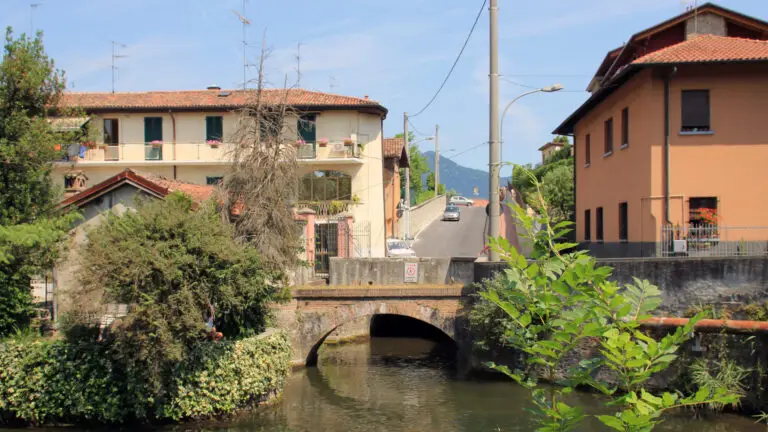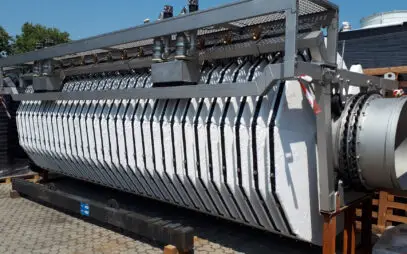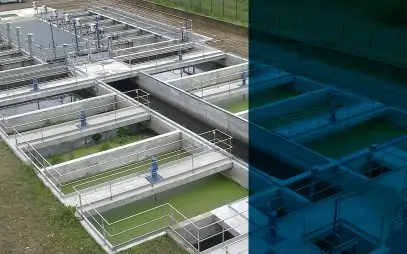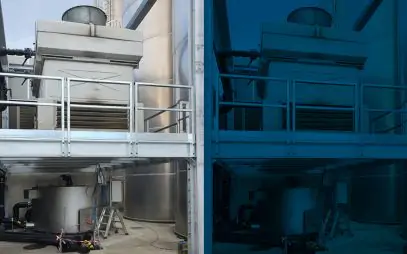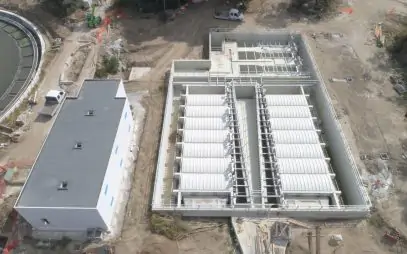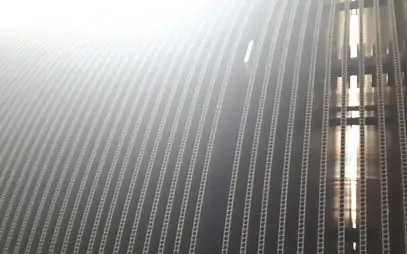1. Needs of the Merone plant for tertiary filtration
The wastewater treatment plant in Merone, in the province of Como, is operated by the company Como Acqua srl. As reported at this link, the treatment plant receives both domestic and industrial sewage from 38 municipalities. The total equivalent population served is about 120,000: 15 million cubic meters of sewage, from an area of 140 km2, are treated annually.
In the 2000s, the system needed general upgrading and the final stage of tertiary filtration (to comply with new legislation in this area). For these needs ASIL (now Como Acqua Srl) issued a call for tenders in 2013. Specifically, the filtration unit that was to be supplied had to treat:
- average flow rate of 44,400 m3/day equal to about 200,000 population equivalent;
- maximum flow rate of 4,400 m3/hr (during heavy rain);
- up to 220 kg/h of suspended solids to be disposed of.
Those bidding had to demonstrate that they had already built systems capable of withstanding these numbers.
2. MITA systems with fleece filters: the solution adopted
The final design for the Merone sewage treatment plant was prepared by the design firm SEAM Engineering of Lomazzo. MITA Water Technologies was able to propose and supply 6 disc filters model MSF 24/120 PPC HD with fleece for the tertiary filtration stage:
- 24 discs per machine,
- 6 x 120 m2 total filter surface area,
- 100% surface area immersed in water for continuous operation.
The system is able to ensure the disposal of particularly high sludge loads, halving the backwashing time of the filtering cloths (which is done by suction in filtered water through pumps) and, consequently, doubling the amount of sludge disposed of in the same period of time.
This can occur because for installed MITA pile cloth filters there is the possibility of simultaneous operation of two backwash pumps instead of one. One of the two usually has a back-up function installed. in case of high sludge loads (which result in increased backwashing cycles of the cloths), however, the two pumps can run simultaneously. A solution that can be adopted, if necessary, in any plant that mounts MITA Water Technologies’ pile cloth filters. The result is a doubling of the disposable sludge load; in Merone’s case, up to 360 kg/h (instead of 180 kg/h in the standard operating condition). Thus the 220 kg/h target, defined by the project, has been abundantly achieved.
Not only that. The concentration of suspended solids in the water coming out of the filters is less than 10 mg/l, as is always the case with MITA equipment: this has allowed, even in the case of the Merone treatment plant, disinfection with UV lamps (ultra-violet rays). This avoided the use of chemicals that, in case of residues in the effluent, can pollute the river ecosystem, the end of the treatment system.
3. MITA cloth filters: additional features
For an in-depth detail of the technical and functional characteristics of cloth filters, see the appropriate section of the MITA Water Technologies website.
Some of these proved particularly useful in the tertiary filtration phase of the Merone plant:
- continuous filtration always ensured;
- limited maintenance requirements;
- low power consumption: in the case of the Merone plant, about 2 to 3.5 kW maximum per machine.
In addition to retaining a greater amount of sludge than any other equipment used in this application, the MITA filter ensures the reduction of residual suspended solids to an extent that allows final disinfection by ultra-violet rays: this ensures that water without traces of chemical bactericides is returned to the Lambro basin – with a view to an improved circular economy.
Ask for Information